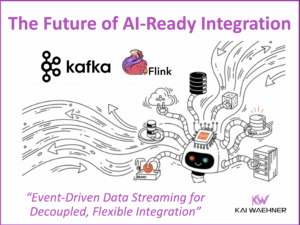In October 2016, the open source IoT integration framework Flogo was published as first developer preview. This blog post is intended to give a first overview about Flogo. You can either browse through the slide deck or watch the videos.
What is Project Flogo?
In short, Flogo is an ultra-lightweight integration framework powered by Go programming language. It is open source under the permissive BSD license and easily extendable for your own use cases. Flogo is used to develop IoT edge apps or cloud-native / serverless microservices. Therefore, it is complementary to other integration solutions and IoT cloud platforms.
Some key characteristics:
- Ultra-light footprint (powered by Golang) for edge devices with zero dependency model, very low disk and memory footprint, and very fast startup time
- Can be run on a variety of platforms (edge device, edge gateway, on premise, cloud, container)
- Connectivity to IoT technologies (MQTT, CoaP, REST, …)
- Highly optimized for unreliable IoT environments
- Intended to be used by developers / integration specialists / citizen integrators either by writing source code or leveraging the Web UI for visual coding, testing and debugging
- Includes some innovating features like a web-native step-back debugger to interactively design / debug your process, simulate sensor events, and change data / configuration without restarting the complete process
Overview, Architecture and Use Cases
The following slide deck shows an overview, architecture and use cases for Flogo:
Click on the button to load the content from www.slideshare.net.
You can also watch the following 45min video where I walk you through these slides and also show some live demos and source code:
Flogo Live Demo and Source Code
If you just want to see the live demo, watch the following 15min video:
Any feedback or questions are highly appreciated. Please use the Community Q&A for to ask whatever you want to know.









